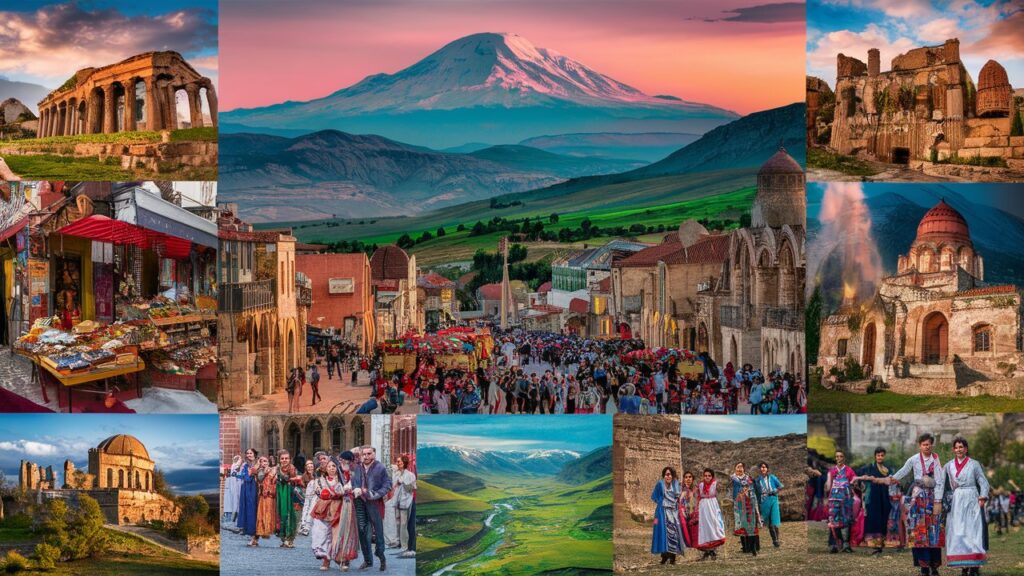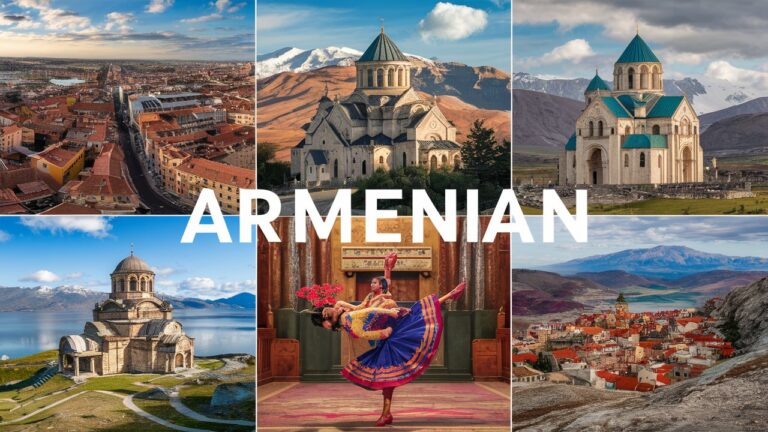Introduction
Nestled at the crossroads of Europe and Asia, Armenia is a land of ancient traditions, dramatic landscapes, and resilient spirit. As one of the world’s oldest civilizations, it boasts a history spanning over 3,500 years, marked by the rise and fall of empires, the birth of Christianity, and a cultural renaissance that continues to thrive. From the snow-capped peaks of Mount Ararat to the bustling streets of Yerevan, Armenia offers a unique blend of historical marvels, vibrant traditions, and untouched natural beauty. This article delves into the heart of Armenia, exploring its storied past, rich cultural tapestry, and the enduring legacy of its people.
1. The Historical Significance of Armenia
Armenia’s history is a testament to its role as a cradle of civilization. The Kingdom of Urartu (9th–6th centuries BCE), one of the region’s earliest states, laid the foundation for Armenian identity. In 301 CE, Armenia became the first nation to adopt Christianity as its state religion, a pivotal moment that shaped its architecture, art, and national consciousness. The iconic monasteries of Geghard and Tatev, carved into cliffs and mountainsides, stand as UNESCO World Heritage Sites, embodying the fusion of faith and ingenuity.
The Armenian Genocide of 1915 remains a defining chapter in modern history, a tragedy that displaced millions and reshaped the diaspora. Despite this, Armenia’s resilience shines through in its preservation of ancient manuscripts at the Matenadaran library and the revival of its language, a cornerstone of national pride.
2. Cultural Heritage: Music, Dance, and Art
Armenian culture is a vibrant mosaic of music, dance, and visual arts. Traditional instruments like the duduk, a haunting woodwind, evoke the soul of the nation, while folk dances such as the Kochari celebrate communal unity. The works of composer Komitas and contemporary artists like Arshile Gorky highlight Armenia’s global artistic influence.
Literature also plays a central role, with medieval poets like Grigor Narekatsi and modern voices such as Hovhannes Shiraz exploring themes of love, loss, and identity. The Armenian alphabet, invented in 405 CE by Mesrop Mashtots, remains a symbol of cultural preservation, adorning everything from ancient stone carvings to modern street art in Yerevan.
3. Armenia’s Natural Landscapes: Mountains, Lakes, and Valleys
Armenia’s geography is as diverse as its history. The towering Mount Ararat, though located in modern-day Turkey, looms symbolically over the Armenian Highlands. Lake Sevan, one of the largest alpine lakes in the world, offers serene vistas and recreational opportunities, while the rugged cliffs of the Debed Gorge hide medieval monasteries like Haghpat and Sanahin.
The country’s national parks, including Dilijan and Arevik, showcase biodiversity and eco-tourism potential. The Areni-1 cave, where the world’s oldest known winery was discovered, underscores Armenia’s ancient connection to viticulture, a tradition still alive in its fertile Ararat Valley vineyards.
4. Armenian Cuisine: A Feast of Flavors
Armenian cuisine is a celebration of fresh ingredients and centuries-old recipes. Lavash, a thin unleavened bread recognized by UNESCO, accompanies meals alongside dishes like dolma (stuffed grape leaves) and khorovats (barbecued meats). The use of herbs, pomegranates, and walnuts adds depth to stews such as harissa and bozbash.
Armenian brandy, famously enjoyed by Winston Churchill, and its burgeoning wine industry highlight the nation’s culinary craftsmanship. Family gatherings often revolve around the tonir (clay oven), reinforcing the role of food in fostering community and continuity.
5. Modern Armenia: Innovation and Global Connections
Today, Armenia balances tradition with modernity. Yerevan, the “Pink City” built from volcanic tuff, blends Soviet-era architecture with trendy cafes and tech hubs. The country’s IT sector, dubbed the “Silicon Valley of the Caucasus,” attracts global startups, while initiatives like the Tumo Center for Creative Technologies empower youth.
Armenia’s diaspora, estimated at 7 million worldwide, plays a vital role in its economy and cultural diplomacy. Organizations like the Armenian General Benevolent Union (AGBU) bridge global communities, ensuring the survival of Armenian identity in an interconnected world.

6. The Armenian Diaspora: Guardians of Identity
The Armenian diaspora, born from centuries of migration and displacement, has preserved the nation’s language, religion, and traditions abroad. Communities in Los Angeles, Paris, and Beirut host vibrant festivals, while lobbying efforts continue to seek recognition of the Armenian Genocide. The diaspora’s contributions to academia, business, and politics underscore its enduring ties to the homeland, often described as Hayastan—the Armenian term for Armenia.
Conclusion
Armenia is a nation where the past and present coexist in harmony. Its ancient monasteries, lively festivals, and breathtaking landscapes invite travelers to explore a culture shaped by resilience and creativity. As Armenia navigates the challenges of the 21st century, its people remain steadfast in their commitment to preserving their heritage while embracing progress. Whether you’re wandering through the ruins of Zvartnots Cathedral or savoring a glass of Armenian wine, this enigmatic country leaves an indelible mark on the heart.
Frequently Asked Questions (FAQs)
Q1: Is Armenia safe for tourists?
A: Yes, Armenia is considered safe for travelers. Crime rates are low, and locals are known for their hospitality. However, exercise caution near border regions with Azerbaijan and Turkey due to political tensions.
Q2: What are the must-visit historical sites?
A: Key sites include Geghard Monastery, the Temple of Garni, Echmiadzin Cathedral (the Vatican of Armenia), and the Khor Virap monastery with stunning views of Mount Ararat.
Q3: How significant is the Armenian Genocide to modern identity?
A: The genocide is central to Armenian consciousness, commemorated annually on April 24. It shapes diaspora activism and efforts to gain international recognition for historical justice.
Q4: What languages are spoken in Armenia?
A: Armenian is the official language, but Russian is widely understood. English is increasingly spoken in urban areas and among younger generations.
Q5: What makes Armenian culture unique?
A: Its blend of ancient Christian traditions, a distinct alphabet, and a diaspora that sustains global connections create a culture both deeply rooted and dynamically evolving.
This comprehensive guide invites readers to discover Armenia’s timeless allure—a land where history whispers from every stone and innovation paves the way forward.
